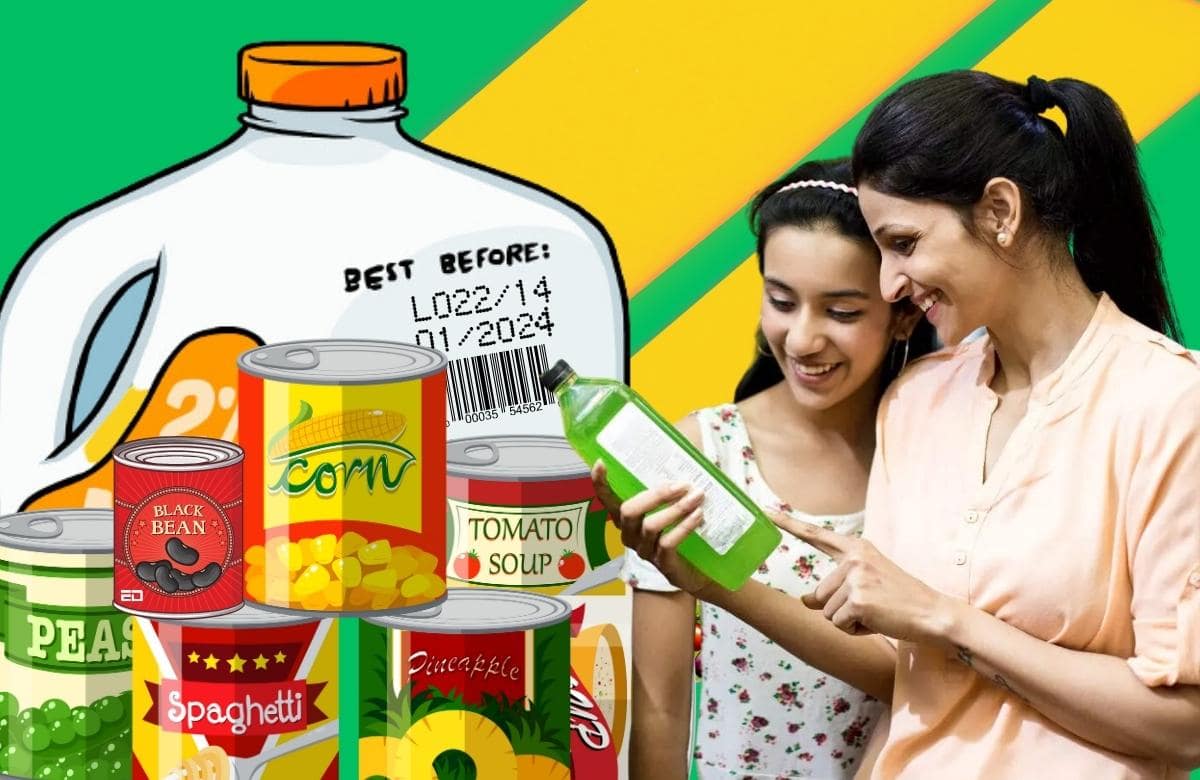In today’s fast-paced world, food packaging often presents us with a myriad of date labels such as “best by,” “use by,” and “best if used before.” These labels are meant to guide consumers in making decisions about the freshness and safety of the products they purchase. However, there is growing evidence that these date labels might not be as reliable as we think.
What is the truth behind food expiry dates and their implications on food safety, waste, and consumer decision-making?
The Fallacy of Expiry Dates
While it is common for people to associate expiry dates with safety, the reality is quite different. Expiry dates are not uniform, and they are not government-regulated.
Instead, they are often determined by food producers based on factors like taste preferences or market competition. For example, a food producer may extend the “use by” date simply because a focus group preferred the taste when consumed within a longer time frame.
The Difference Between Safety and Quality
One of the most significant misconceptions is the conflation of safety and quality when it comes to expiry dates. The dates printed on food packaging are primarily concerned with maintaining optimal taste, texture, and appearance rather than indicating when the food becomes unsafe to eat.
As a result, consumers may unknowingly discard perfectly safe and edible items based on the mistaken belief that the food has become hazardous.
Impact on Food Waste
The current food labeling system, with its lack of clarity and standardization, contributes to significant food waste. The FDA reports that consumer confusion around date labels is responsible for approximately 20% of the food wasted in households, amounting to an estimated $161 billion per year.
This wasteful practice not only strains household budgets but also has a negative impact on the environment.
Read More: Guess India’s Favourite Food Order Dish; Report Reveals
A Call for Change
In response to the alarming levels of food waste and the confusion surrounding date labels, experts suggest adopting a more scientific and standardized approach.
Instead of using date labels meant for consumers, manufacturers and distributors could implement “production” or “pack” dates, along with “sell-by” dates for retailers. These labels would help retailers manage stock effectively and ensure that products remain at their peak quality.
The Potential of Microbial Studies
A more scientific approach to food labeling involves conducting microbial studies. These studies measure the growth of bacteria over time in perishable foods, such as meat and dairy products. By combining data on nutritional content and microbial safety, we can create more accurate and meaningful expiry dates that align with both quality and safety concerns.
Trusting Our Senses
In the absence of a uniform food dating system, consumers can rely on their senses to determine freshness. Discarding items that show visible signs of spoilage, such as mold or off-smells, remains a sensible practice. Additionally, more perishable foods that are prone to microbial growth, like cold cuts, may require closer attention to their dates.
The current food labeling system’s lack of standardization, coupled with the misconception surrounding expiry dates, has led to significant food waste and consumer confusion. To reduce waste and promote safety, we need a more scientifically-based approach to determining food freshness.
By combining nutritional data with microbial studies, we can create reliable and accurate date labels that ensure both quality and safety. In the meantime, relying on our senses and making informed decisions about the foods we consume can go a long way in reducing waste and ensuring a safer food supply for all.
Image Credits: Google Images
Feature image designed by Saudamini Seth
Sources: The Economic Times, The Times of India, The Atlantic
Find the blogger: Pragya Damani
This post is tagged under: expiry date, useless expiry date, expiry date on food items, food items
Disclaimer: We do not hold any right, or copyright over any of the images used, these have been taken from Google. In case of credits or removal, the owner may kindly mail us.
Other Recommendations:
3 Incidents That Led To The Word ‘Biryani’ Becoming Political In The Last One Week



































